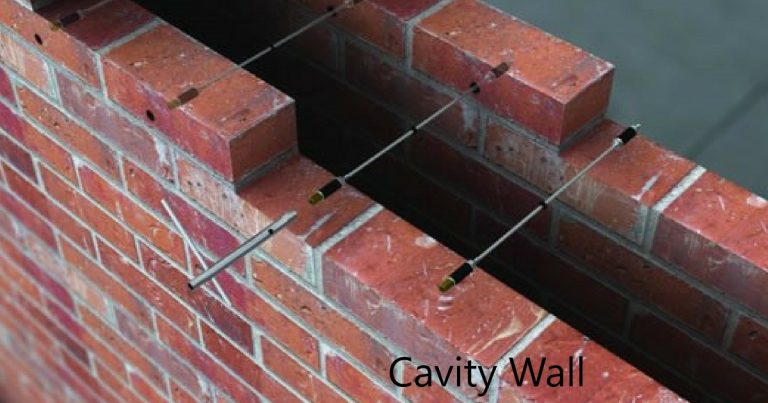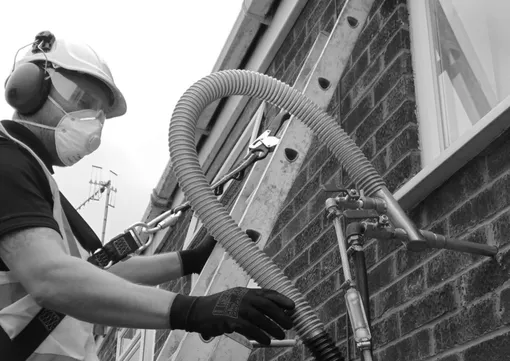Cavity Wall Insulation Problems
General InsulationCavity Wall Insulation Problems
Cavity wall insulation is an economical way to reduce heat loss from your home. While more homes are being constructed to be more energy-efficient and eco-friendly, a small percentage of them are at the risk of having the cons eventually outweigh the significant pros. If the cavity insulation is not placed properly, it may result in a future damp problem among other potential issues.
What are Cavity Walls?
Insulating a hollow wall is exactly what it sounds like. The space between the two brick walls is filled with an insulating layer that slows the passage of heat through the wall. Traditional, solid walls conduct double the amount of heat as hollow walls. This is before any insulation is added. As a result, absorbed moisture passes straight through.

What are the Benefits of Retrofit Cavity Wall Insulation?
Having that perfect, well-regulated temperature within your home does wonders. It is that cosy feeling, that warmth, that makes you happy to be within the confines of your own home. The opposite also holds true, because retrofit cavity wall insulation helps keep your home cooler throughout the months with higher temperatures.
The insulation is barely visible (if at all), pocket-friendly, efficient, and does not eat up any of your existing living space. Cavity wall insulation not only helps you save money on your heating costs by preventing energy loss through the walls, but it also helps you decrease your carbon footprint by reducing the amount of CO2 and other greenhouse gases produced by your home.
Cavity wall insulation has been a preferred method when increasing a building’s thermal efficiency for years. Government support – through subsidies – has encouraged UK property owners to undertake the relevant modifications. The one downside, however, is that not all cavity walls are appropriate for insulation.
How is Cavity Wall Insulation Installed?
A cavity wall has a 50-mm gap between the outside and interior walls of the structure. The insulation in cavity walls come from materials such as mineral wool fibre, foam, or polystyrene. The insulating materials are injected into the gaps to regulate the transfer of heat between the interior and exterior.
If the structure has already been built, the exterior wall is drilled into and the cavity wall insulation is inserted through the drilled holes. These holes are subsequently filled to match the building’s brickwork and original appearance. Cavity wall insulation is on average a two-hour job. Property size and other variables come into play when determining the actual duration of specific jobs.

Cavity Wall Insulation Problems
Anything that drives down expenses and is eco-friendly is a definite good thing, right?
It is, but only if it is done right.
Government subsidies and financing programmes encouraged the construction of cavity wall homes with retrofitting insulation. The incentives were outstanding. It is no wonder that many unskilled and untrained contractors rushed into it, going out of their way to make as many installations as possible. The first cases of retrofit insulation problems snowballed into issues affecting thousands of property owners.
It is important to note that the majority of cavity wall insulation is completely safe. The deciding factor is quality. Quality of the materials and quality of work. Modern installations are not plagued by issues, but structures insulated years ago need re-examination.
The majority of homes are suitable for cavity wall insulation; however, this is highly reliant on the condition of the external walls of the building. If the home is already weatherproofed, there should be no worry about any problems resulting from the moisture.
Ineffectiveness/ Poor Fit
Even if cavity wall insulation is not done properly, the majority of homeowners remain unaware. Even if the energy savings are not as promised, there is no apparent indication of a malfunction.
The majority of problems associated with moisture caused by cavity wall insulation are the result of improper installation. One aspect, that is often neglected, is the suitability of the cavity wall insulation that is being installed. Prior to installing cavity wall insulation, it is prudent to ascertain if it may result in future damp problems.
Wind-Driven Rain
Wind-driven rain is one of the biggest issues facing retrofit cavity wall installations is wind-driven rain. If your home is found in an area exposed to relatively stronger driving winds, the risk of experiencing moisture-related problems is much higher.
Damp and Mould
When cavity wall insulation is done in a home that is situated or constructed in such a manner that the cavities should not be filled, or when the job is performed improperly, the first and most apparent indication of a problem is almost always dampness.
Condensation is the most prevalent kind of dampness. It is produced by moist warm air condensing on cold walls, most notably in rooms that generate a lot of air moisture. Penetrating damp is often caused by structural issues which allow water to seep in. Rising damp is produced by groundwater infiltrating a wall or floor.
Cavity-wall insulation causing damp is rare, but the extra assurance will do you no harm whatsoever.
Does your home/ property:
- Experience high amounts of wind-driven rain?
- Have a tree or adjacent building cover?
- Undergo constant maintenance?
- Have a cavity of less than 40mm?
- Have walls higher than 12m?
Answering these questions with the aid of a professional will help you make the best decision for your home.
Solutions
Information is power. Whether you are already experiencing problems or not, having the right information is key to either preventing or solving these problems. For instance, it is important to know that proper energy suppliers should have a registered guarantee for the retrofit insulation installation with the Cavity Insulation Guarantee Agency, CIGA. The body was formed to help resolve problems and compensate victims of substandard installations.
As for your property, maintaining your exterior walls goes a long way in preventing damp and mould. If you already have mould, a dehumidifier is a worthwhile investment.
Need more information on cavity wall insulation? Contact our accredited installers.
Back to blogs



